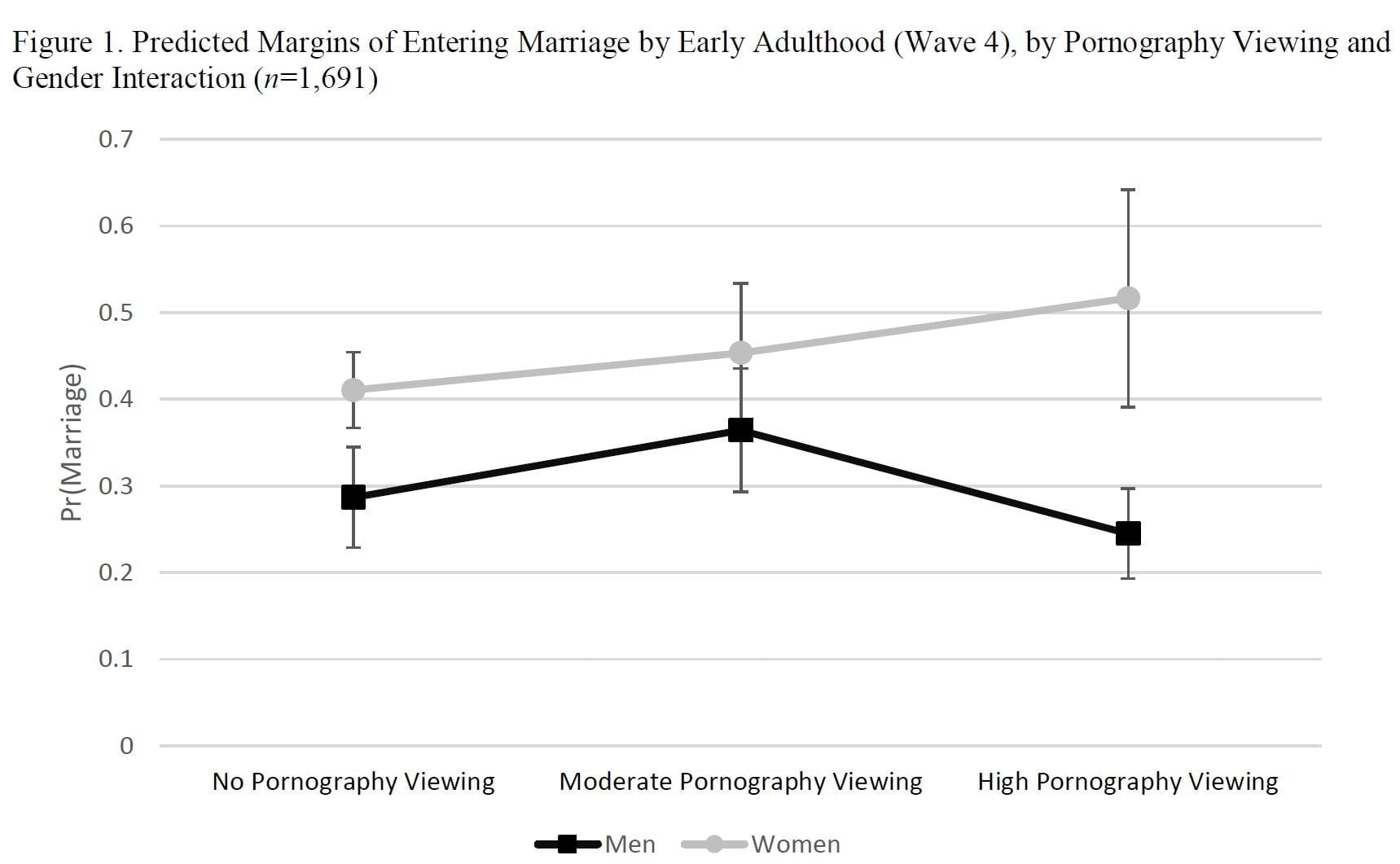Significant finding:
For young adult men it seems, viewing pornography is associated with a lower likelihood of marriage during early adulthood regardless of how religious they are

Perry, Samuel L., and Kyle C. Longest.
Abstract
A number of recent studies have examined the connection between pornography use and relationship outcomes for Americans already in marriages. The current study takes this research in a different direction by examining (1) whether pornography use may be associated with entrance into marriage during early adulthood and (2) whether this association is moderated by both gender and religion, two key factors strongly related to both pornography use and earlier marriage. Longitudinal data were taken from waves 1, 3, and 4 of the National Study of Youth and Religion, a nationally-representative panel study of Americans from their teenage years into early adulthood (N = 1,691). It was theorized that frequent pornography use at earlier survey waves may foster more sexually progressive attitudes that may lead to devaluing marriage as an institution, and, for religious men in particular, may disincentivize marriage as a “socially legitimate” means of sexual fulfillment. The association between pornography use and marriage entry was non-linear for men and non-existent among women. Among men, higher frequency pornography viewers were not significantly different from non-viewers in their likelihood of marriage entry. Compared to more moderate levels of pornography use, however, higher levels of pornography use in emerging adulthood were associated with a lower likelihood of marriage by the final survey wave for men. Associations were not moderated by religiosity for either gender. Data limitations and implications for future research are discussed.
Interesting findings:
Even more dramatic, only 10% of women reported high pornography viewing with 40% of men reporting this high level of pornography viewing. Interestingly the difference by gender in Moderate Viewing was not nearly as dramatic with 22% of women and 27% of men viewing between 1 and 3 programs in a year. A much higher percentage of women were pornography abstainers (68%) than men (33%). The difference in pornography use by gender appeared to be at the extremes, with women being more likely to not watch at all, and men being more likely to watch a high level.